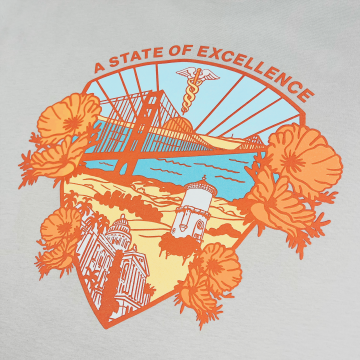How to Make SMU More Diverse and Why it Matters

In five years, what will Samuel Merritt University look like?
What type of student will it educate? What communities will it serve? And how can the 112-year-old institution cultivate a culture of inclusion?
Those questions are at the heart of the University’s recently adopted Strategic Vision for Diversity, Equity, and Inclusion 2021-26. It’s a timely report. Work started before last summer’s Black Lives Matter demonstrations but completed in its wake. The plan aims to ensure that all SMU students, faculty, and staff have equal opportunities to succeed and that the University reflects the state’s diversity. It also foresees a University that continually reexamines practices and policies.
We spoke with Eva Hilliard, executive director of SMU’s Office of People and Culture, who joined the University in 2020, and Ché Abram, former associate director of diversity, about the plan’s goals related to faculty, students, and overall culture.
Diverse Faculty
Why is faculty diversity critical?
Hilliard—Diversity among faculty is an issue nationwide—a Pew Research Center analysis found that more than 75% of all U.S. college faculty are White. Students want to see themselves in faculty. That can be based on gender, race, ethnicity, background, where people come from, even their ideals and value system. The faculty relationship is the most important relationship students will have and is a significant element of their educational support system.
How can SMU improve diverse faculty recruitment?
Hilliard—We’re looking at where we advertise, verbiage in our job postings, how we review candidates, and how we interview, including training for leadership and search committees.
Abram—In interviews, what are we asking? Instead of standardized questions about diversity, equity, and inclusion, we should ask how candidates specifically embed those things into their classroom, curriculum, practice. How do they take the social determinants of health and apply them in the classroom? In how they practice healthcare?
What role do adjunct faculty play in increasing diversity?
Abram—A lot of the diversity at colleges and universities across the nation is in the adjunct pool, and that’s true here. This plan calls for making sure that our current full-time faculty mentor adjunct faculty so that they can be considered in candidate pools for full-time academic appointments.
Diverse Students
How can SMU recruit more diverse students?
Abram—Holistic admission will further diversify our student body. Essentially, it’s using a metrics-blind system by creating a baseline for applications. If applicants meet those baselines, we trust they are qualified. From there, we read applications for the humanity of the student. What they’ve experienced and what they have to give to make us better.
How will SMU support students once they’re at the University?
Hilliard—Three of the plan’s seven goals focus on increasing the number of underrepresented students and helping them thrive. That includes eliminating the disparity in on-time graduation rates for all students in all academic programs. University data show that students from underrepresented minority groups often need to re-take a course because of family challenges or due to a lack of adequate academic resources.
Abram—We will offer a range of supports, including expanding the alumni tutor program, launching an alumni mentorship program, and increasing mental health services with a focus on counseling for Black, Indigenous, and people of color students.
How does fundraising contribute to student diversity?
Abram—We can’t do anything without money and resources. The fundraising called for in the plan—$5 million in five years—is for increasing scholarships for underrepresented students. Studies show that students who work, especially those from under-resourced backgrounds, are more likely to have lower grades.
Diverse Culture
Why is culture important?
Hilliard—If we don’t have a culture where people feel safe, appreciated, secure, and recognized, and where they can be their true selves, we’re going to have high faculty turnover rates and we won’t be able to sustain this work. To shift the culture, we’ll ask whether there are better ways to do things. As one example, for the first time, we’re requiring all academic divisions to develop their own diversity, equity, and inclusion plans.
One plan goal is to implement restorative practices. What is that?
Hilliard—Instead of taking a punitive approach and saying, ‘Here’s the policy you violated, here’s your consequence,’ a restorative practices coach works with both parties to have a dialogue. They can share details of what happened, how they’re feeling, and look at things from a different perspective. There’s a chance to educate someone on why a behavior or remark was concerning.
The point is to have a healing process and space to open up and to be vulnerable with each other and learn from that.
Abram—Restorative practices are all about self-reflection and considering how I can make things better.


